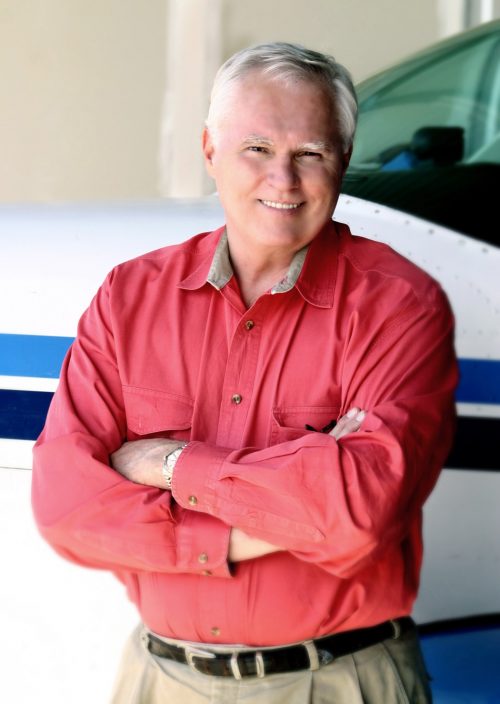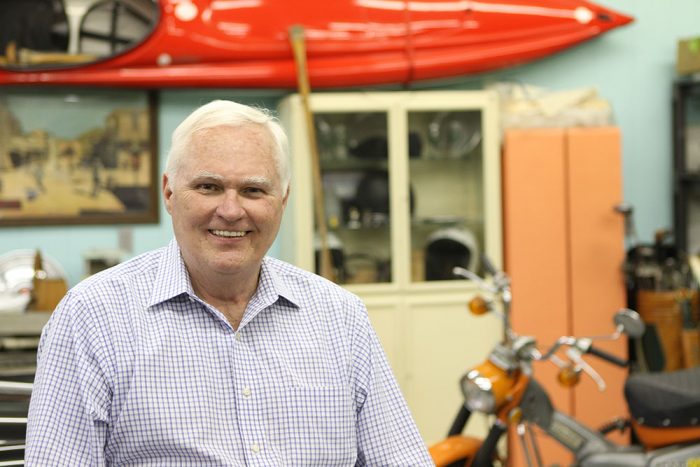
The Ups and Downs of Creating a Major Invention and Knowing What to Do with It
When you think of 3D printing, images of space-age shapes and maybe even a guy named Chuck Hull probably get conjured up. Hull: the man widely dubbed as ‘the father of 3D printing.’ It’s true Hull – now 75 and still working as chief technology officer of 3D Systems – did patent a 3D invention in 1986. But, little do people know that two years earlier in the heat and humidity of Greenville, SC, the idea had already been born. By entrepreneur, Bill Masters.
Masters grew up in Easley, South Carolina and through himself into science and engineering as a kid. This passion followed him to college, where he studied electrical engineering while working a 40-hour week on the side. Today, he still resides (and invents!) in South Carolina, but is instead widely known as the father of modern kayaking – founding and running Perception Kayaks from 1975 to 1998. In fact, he has recently been inducted to the International Whitewater Hall of Fame in the Pioneer category for his efforts. It was on the banks of a kayaking trip – the Chattooga River under the 76 bridge on the South Carolina side to be exact – Masters began thinking about spit balls that eventually led him to 3D printing.
“I was sleeping on the side of the the river on my kayak looking up at the stars and I realized if you could take one star and make that your seed point, you could add stars from any direction until you had the shape you wanted,” he remembers of the time. “Similarly, if you shoot a spit ball down and it sticks, you can then shoot multiple down on top of it. They stick and stick and stick until eventually you can build something with them.”
This was in the 1970s, and it took him a few years to develop the idea and save enough to afford the patent. But by 1984, his “Computer Automated Manufacturing Process and System” was ready. He filed U.S. Patent 4,665,492 A on July 2nd – two full years before Hull patented his “Apparatus for Production of Three-Dimensional Objects by Stereolithography”. In fact, it was the first of five patents belonging to Masters that laid the foundation for the 3D printing systems used today. According to Masters, his patents still have parts that noone has done today.
“I didn’t know at the time I was the first,” states Masters. “And to be honest after Hull came out with his I just assumed I wasn’t. It wasn’t until years later I looked at the patent dates and realized, ‘WOW I was filed before everyone, even the French!!’”

Unfortunately for Masters, his name didn’t become the 3D staple Hull’s did. He founded Perception Systems that received seed funding from a South Carolina venture capital group, Palmetto Seed Capital. In a classic case of venture capitalist follow on funding, Masters lost control of his patents. The company was renamed BPM technology and burned through millions chasing complex software to control a simple process similar to what is the standard today. Eventually, BPM went out of business and Master’s patents were lost. On the other side of the coin, his kayak company was booming, so he had lots to concentrate on.
Now in his 60s, Masters is still an active inventor and entrepreneur owning over 30 patents to his name and is working on such innovations as drip free honey pumps, gun safety technologies, car safes and medical products to name only a few. He continues to work on his 3D printing technology, and is in admiration of the amount it has transformed.
Previously, only large institutions utilized the technology, and it was integrated in medical, military, industrial, and government applications, as asserted by SelectedBest. Businesses now use 3D printing technology to optimize their operations and manufacture products or other work items in an efficient and innovative manner. The industry has certainly grown over the years, and it’s exciting to see where it will go.
“I knew in my head and heart that 3D technology could transform the way we make things when I came up with it,” Masters admits. “At that time, people in South Carolina looked at me as crazy because we had so little technology in the state. Now, South Carolina has transformed itself and crazy ideas are welcome here. I am proud to have been a part of my state’s growth. Because of my state’s visionary leaders and entrepreneurial culture I was able to leap from growing up in poverty to success.”
Masters is also using his past experiences to fuel his passion of protecting today’s inventors/entrepreneurs who are in similar situations as he found himself. Aside from advising an Entrepreneur MBA Course at his Alma Mater – Clemson University – he also has some advice on what is necessary for entrepreneurial survival.
“First and foremost the question you need to ask yourself is what type of entrepreneur are you. We’re all born to survive, and therefore we all have some degree of entrepreneurial spirit in us. It’s where and how we adapt to the environment that determines our growth. Understand that there will be hurdles both in society and business you will have to cross and we’re not all born leaders. Find and trust in a good advisor who will be able to support your entrepreneurial journal and lean on the ecoculture of entrepreneurs out there.”
Rapid Fire with Bill Masters:
- When did you first start inventing?: In my 20’s
- What was your first invention?: A fly swatter that didn’t make a mess when you swatted the flies.
- What high school did you go to?: Easley High, SC
- If you could go back in time, how would you change your 3D Printing Experience?: I would have learned from my mistakes and changed the path of those coming after me. It’s important to stay on your toes as an entrepreneur!
- What is your biggest drive to continue inventing?: It’s fun! I love the journey of having a great idea then raising it to become reality.
###
About Bill Masters
Bill is an American engineer, inventor, manufacturing entrepreneur, and business advisor and mentor. He is widely known as the father of modern kayaking, but he’s also the father of 3D printing, holding the first 3D patent filed with the USPTO. Today, Bill works to share his experience and insights with young people and a range of commercial enterprises. He also presents to academic, industry and professional groups, with a perspective that combines his humble roots, countercultural sensibilities and innovative approach to engineering and manufacturing. His full list of patents related to 3D printing are: 4,665,492, 5,134,569, 5,216,616, 5,546,313, and 5,694,324. For more information on Bill, check out his Website: http://billmasters3d.com/
Find a Home-Based Business to Start-Up >>> Hundreds of Business Listings.













































